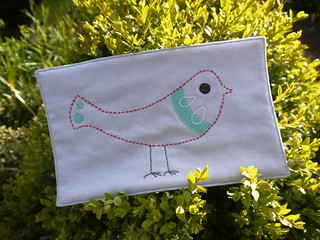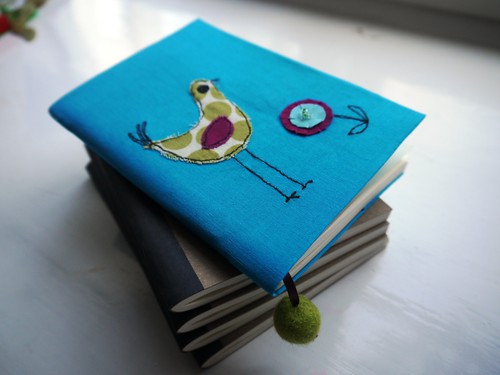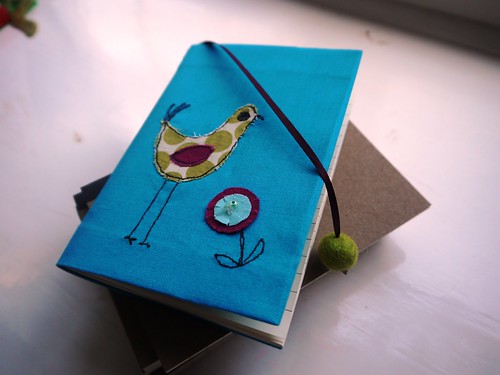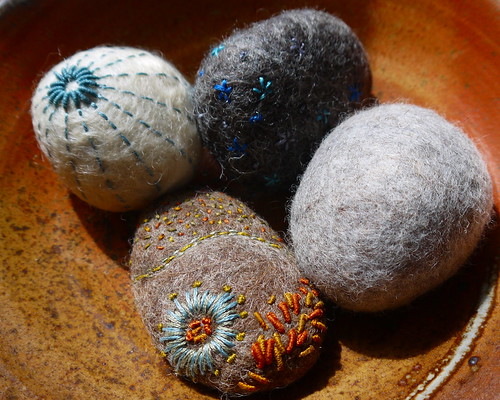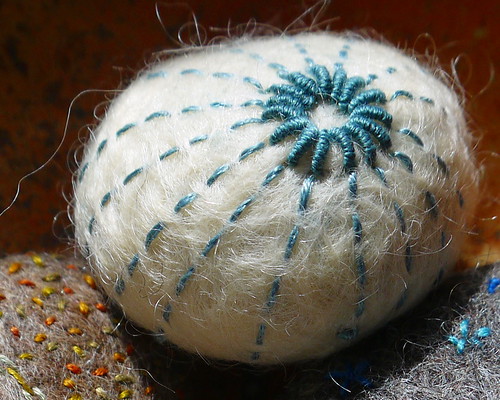
I sewed this one up just before I was taking my bags and purses to a Christmas sale, using Noodlehead's (free!!) trail tote pattern for Robert Kaufman. I'd had the idea of a bag with an owl on the front flap for ages, then I saw this round-based bag pattern and thought it would work really well.

Of course, the Noodlehead pattern doesn't have a front flap, so I made my own pattern piece for that. I also missed out the piping as I was working with velvet and fleecy interlining, so had enough bulk to contend with already! When I make the pattern with lighter weight fabric, I'll definitely use piping because it gives such a lovely finish.
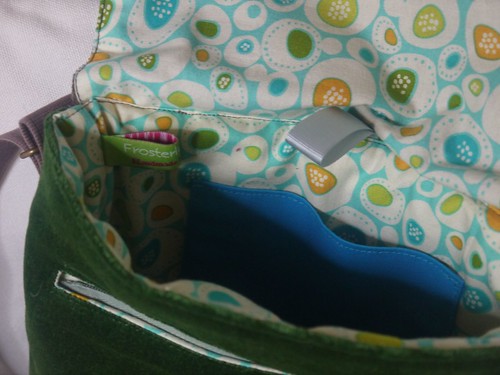
I also did something different to sew my strap on than the pattern says. I find it easier to stitch the strap to the outside seams of a bag, before the lining goes in - that way, there are fewer layers to get the machine to stitch through when you go around the top edge. Also, when you open the bag the strap then falls away from the opening.
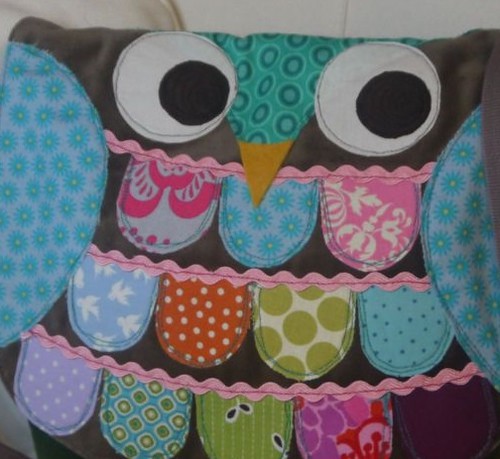
Finally, instead of using a magnetic snap to close the bag (I didn't have one handy), I added a small ribbon loop in the back seam with a big popper on. That means the bag can be closed without the owl on the lid being pulled out of shape - it can just hang around being an owl!
